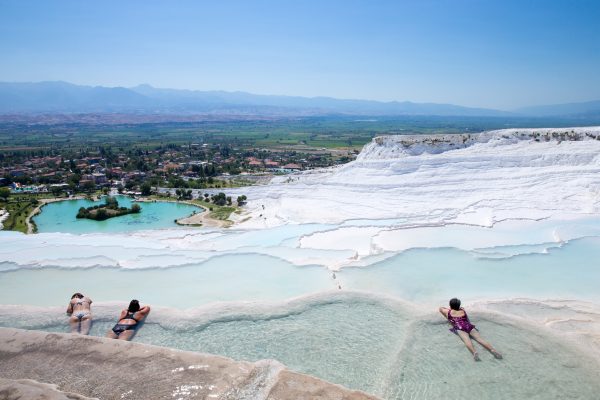Embedded in the mountains, these thermal pools also boast health benefits for all
Photos: Shutterstock.com

Forget water parks and their plastic slides. The pristine white travertine terraces of Turkey’s Pamukkale will not only take your breath away with its natural formation, but also render you in true bliss upon full immersion in its thermal waters.
To literally mean ‘Cotton Castle’ in Turkish, Pamukkale is a melting white cake of petrified limestone layers, boasting small turquoise pools due to the enviable position at the base of a cascading waterfall. Naturally heated by volcanic lave deep beneath the earth, the thermal waters are rich in minerals, which is said to offer a whole range of health benefits such as providing relief to sore joints and rejuvenating the skin. The paradisaic place also shares the geographical location of the well-preserved ruins of the Greek-Roman city of Hierapolis, where the Romans would lolled in the heated pools centuries ago.

Located at the western rim of the vast Anatolian plateau, Pamukkale-Hierapolis is accessible by a number of city coaches or if you’d rather, you can get there via a rented car. To avoid crowds, it is advised to reside in the nearby Pamukkale village so that you can explore the ancient site bright and early in the morning. Most of the day-trippers arrive in the afternoon.
Be ready to go mostly barefoot during your time there as wearing shoes or slippers is not permitted at the site. This is to prevent erosion and staining delicate calcite deposits. Therefore, ready a bag to store your footwear and other traveling essentials (swimwear!).
The Pamukkale-Hierapolis travertines joint site opens November to March from 6am – 630pm, April to October from 6am – midnight. Entry tickets are at 25TL (S$8.60). The winter season of November to March can be quite frosty, which makes the perfect period to seek comfort in the hot springs of Pamukkale.
ADVERTISEMENTS










Leave a Reply